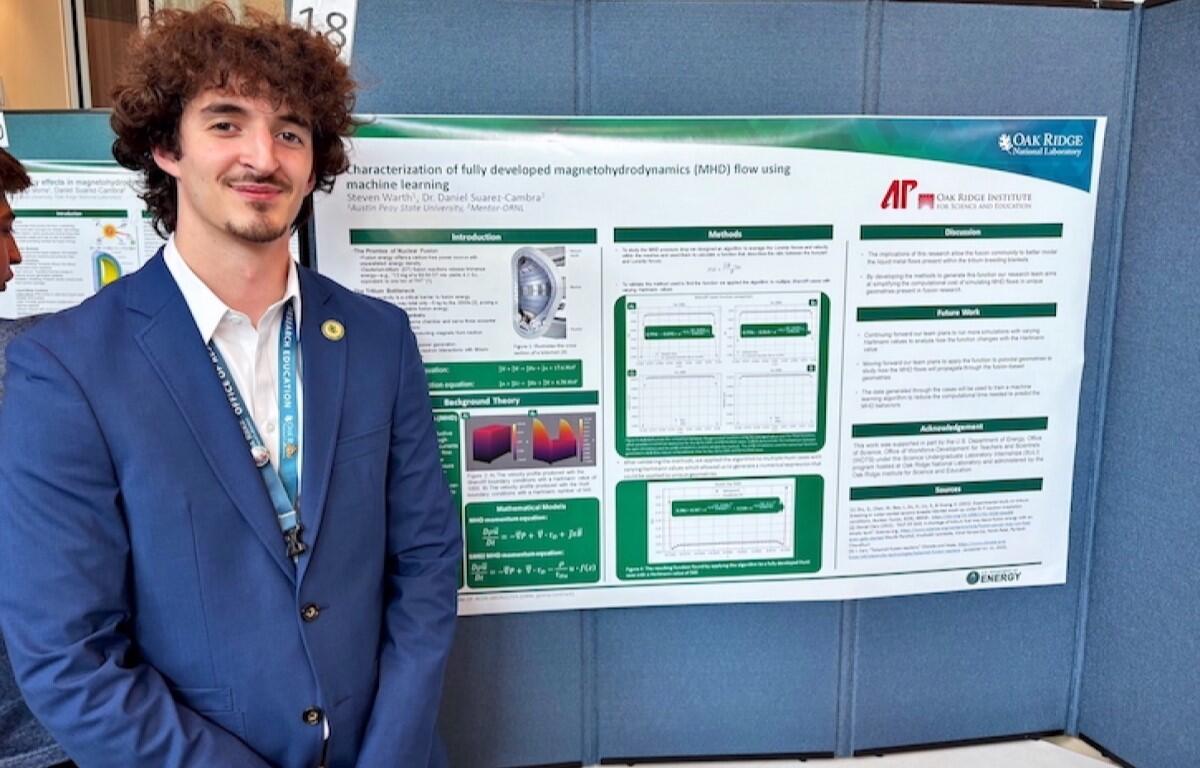CLARKSVILLE, TN – Steven Warth had been reading about fusion energy for years when he walked into his modern physics class at Austin Peay State University. But it wasn’t until he chose tritium breeding blankets as his class project topic that his casual interest became a clear career path.
“I’ve been fascinated with fusion energy forever,” said Warth, now a senior in Austin Peay’s engineering physics program. “But that project really got me thinking seriously about the problems that need solving.”
Over the summer, thinking about those problems took Warth to Oak Ridge National Laboratory, where he was one of the first Austin Peay students ever chosen for the prestigious and highly selective Science Undergraduate Laboratory Internship (SULI) program.
Getting on the list
Unlike the typical undergraduate scramble for research opportunities, Warth’s path to Oak Ridge was surprisingly direct. For his class presentation in modern physics, Warth was able to leverage contacts within the APSU physics department for aid from an Oak Ridge researcher. His work impressed, and soon he found himself on the Fusion Energy Division’s watch list for promising students.
“I was put in contact with Monica Gehrig, a researcher there, through one of Dr. [Eugene] Donev’s former students,” Warth said. “She helped me with that class project, and afterward put me on their list of potential students to work with.”
When SULI applications opened, Warth was among the first contacted for the opportunity. His combination of genuine interest, prior knowledge, and clear focus made him exactly the type of student Oak Ridge was seeking for its competitive summer program.
“I think it was the same day that mentors were able to send out applications,” he said. “I was almost immediately picked up.”
Fusion school and finding his footing
Warth’s Oak Ridge experience began not at the laboratory itself, but at the University of Tennessee’s nuclear engineering department. All fusion division interns spent their first week in an intensive fusion school — eight hours daily of lectures covering everything from plasma physics to reactor economics.
“My hand was hurting a lot by that point from all the note-taking,” Warth said. “I’m ashamed to say I was falling asleep at certain points, but I think we all were. Eight hours a day for a week is a lot.”
The crash course proved essential preparation for the work ahead. Warth’s project involved developing faster computational methods for simulating liquid metal flows in fusion reactors — work that required understanding both the underlying physics and the engineering challenges of making fusion power practical.
Once at Oak Ridge proper, Warth found himself in a different world from typical undergraduate research. This was not about learning techniques or following established protocols. His mentors expected him to tackle genuine research problems with real implications for fusion energy development.
Warth spent his days developing mathematical approximations that could speed up computer simulations from 16 hours to 30 minutes — work that could eventually help engineers design better reactor components and drastically reduce the time needed to compute the flows.
“We’re trying to solve the computational time problem,” he said. “If you want to design these systems, you need to be able to run the math a lot faster than we can right now.”


